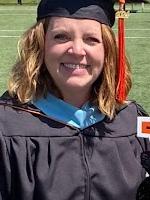


We are 21st century educators and learners who often teach in a 20th century model. With the infusion of technology into the classroom, we do not have the luxury to see technology as a novelty for word processing, but a powerful tool to provide learners access to an entire world. Through this workshop, participants will be able to identify their own challenges and how to overcome them as we outline our journey to technology integration into the classroom.
Often teachers are our own best resource, but we sometimes do not know what we are looking at or its full impact. When choosing technology and platforms for the school level we utilize a layered approach with teacher and student input. We have looked at what our LMS (Google Enterprise) and have filtered in additional platforms and programs to support learning in the school community. By unifying our goals in an instructional model focused on the T3 framework and meta-learning research, we have worked to create a systemic model, supported and guided by leadership and infused in the classroom by our instructional coaches and teachers.
We will provide participants a view of how we harnessed some of our most productive platforms in enhancing and improving student engagement and achievement: Google Workspace for Education, Formative, Lumio, Book Creator, and Canva. With this in mind, we will focus on and demonstrate how the use of EduProtocols, in particular, support research-based strategy instruction that foster productive and contributive learning. At the same time, we will note how we put the concepts of meta-learning at the heart of this work by ensuring that students have ample opportunities to reflect on both their cognitive and emotional growth as they master skills and content. Evidence our success will be shared in exemplars, data, and anecdotal evidence.
There will be an introduction to the 21st Century teaching and learning model. Through this lens and that of renowned practitioners including Russel Quaglia of the Qualgia Institute for Student Voice and Dr. Sonny Magana, author of Disruptive Classroom Technologies and the T3 EduProtocols model, we will take participants through our infusion of technology into our classrooms and buildings. We will provide the layered approach in how we incorporated technology into our school community in a way that had teachers prepared to convert to a fully remote teaching model when required.
This interactive presentation will immerse participants in examples of the T3 Eduprotocols, as well as student voice through the use of the 4 Quaglia Quadrants and aspirations framework.
10 minutes: Jamboard: Which strategies have you successfully paired with technology in order to accelerate student achievement: Select from the following - Jigsaw, reciprocal teaching, summarization, Activating Prior Knowledge, Student-Developed Mastery Goals, Student-generated tutorials, Student Self-Appraisal/Feedback
We will share a model that shows resources and tech integrations for each strategy with examples and templates. - Participants will leave with ready-to-use templates that can be integrated with a variety of technology platforms.
20 minutes: Participants will complete a Thin Slides EduProtocol during the presentation that starts with- What does meaningful technology integration mean to you? and ends with ideas for how to integrate technology with a focus on student centered opportunities for production and contribution with technology tools.
10 minutes: Jamboard: Why focus on production and contribution when pairing strategy instruction with technology?
15 minutes: Jigsaw group activity- Participants will interact with pieces of information centering on contribution and high effect size strategies that foster contribution in a learning pairs Jamboard activity. Participants will practice drafting declarative and procedural learning goals, predicting activities that will support mastery, and linking the technology tools that might be integrated effectively.
5 minutes: Poll - What other contributive activities/strategies could be used? What other technology integrations could be implemented to facilitate collaboration/contribution?
Closing: We will reflect on how this activity supports the T3 framework and how the process taken aligns with the research behind meta-learning.
Hattie, J. (2012). Visible learning for teachers: Maximizing impact on learning. Routledge.
Heather Esposito, D. K. F. and D. R. Q. (2020, May 12). Practical tips to make student voice the cornerstone of your online classes. EducationHQ. Retrieved September 22, 2022, from https://educationhq.com/news/practical-tips-to-make-student-voice-the-cornerstone-of-your-online-classes-76868/
Hebern, M., & Corippo, J. (2018). The EduProtocol field guide: 16 student-centered lesson frames for infinite learning possibilities.
Klein, A. (2022, September 21). Should it stay or should it go? schools trim number of Tech tools they use. Education Week. Retrieved September 22, 2022, from https://www.edweek.org/technology/should-it-stay-or-should-it-go-schools-trim-number-of-tech-tools-they-use/2022/09
Magana, S. (2017). Disruptive classroom technologies: A framework for innovation in education. Corwin Press.
Magana, S., & Marzano, R. J. (2014). Enhancing the art and science of teaching with technology. Bloomington, IN: Solution Tree Press.
Magana, S. (2022). Learning in the Zone - The 7 Habits of Meta-Learners. Dave Burgess Consulting, Inc.
Magana III, A. J. Transcendent Leadership: A Metaphor For Building Collective System Efficacy.
Prothero, A. (2022, March 9). How to make tech use in schools easier on teachers. Education Week. Retrieved September 22, 2022, from https://www.edweek.org/technology/how-to-make-tech-use-in-schools-easier-on-teachers/2022/03
Quaglia, R. J., & Corso, M. J. (2014). Student voice: The instrument of change. Corwin Press.
| Related exhibitors: | Sora, Book Creator, Canva Education, Screencastify |